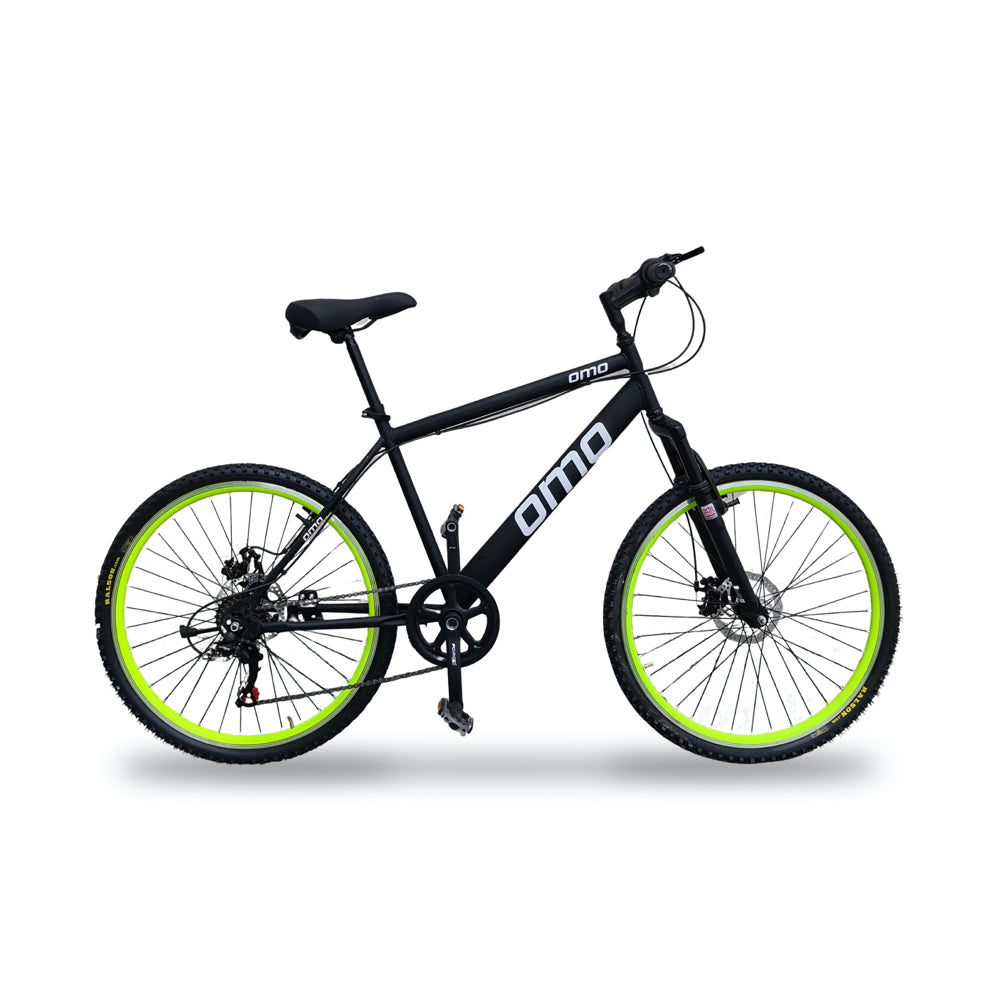HOW TO CLEAN YOUR BIKE IN 7 SIMPLE STEPS
OMO BikesShare

A bike works more smoothly, lasts longer, and looks better when it’s clean. That will make riding it more enjoyable and save you money long term.
While it may be tempting to just pop it in the shed until your next ride, even a few minutes spent at regular intervals will improve your riding experience and the longevity of your bike.
Regardless of what shape your bars are or how many suspension parts your bike has, any build-up of dirt will wear through moving parts if left to do so. As important as it is to clean your bike after a filthy wet ride, it remains the same after a dry, dusty ride too.
BIKE WASH ESSENTIALS:
Water source: a bucket or garden hose. A jet wash/pressure washer can be used, and while the jury is out on whether it does force dirt past seals and reduce bearing or bushing life, it’s best not to point it directly at bearing or suspension seals
Work-stand (optional, but undoubtedly helpful)
Brushes. Several brands offer a ‘bike wash brush kit’ with brushes for the various applications, but if you don’t have those, a couple of toothbrushes and an old dustpan brush will do
Chain cleaning device or a specific stiff-bristled toothbrush if you don’t have one.
Degreaser: Like WD-40, Muc-off MO94, or any Other brand available in the market.
Bike Wash fluid: Like any Bike wash Shampoo or Dish Wash Detergent like Vim bar Liquid or Prill but don't use Detergent because it's harsh and leaves a spot on your frame after Wash.
Chain lube: Always use bike Specific Chain Lube, not any random bike lube.
Paper towel or Microfiber Towel: If you don't have both uses any old cotton cloths or rags.
CLEAN YOUR DRIVETRAIN:
If you have a chain cleaning device, use it to clean the chain. If not, you’ll simply have to apply the degreaser and use a brush. You’ll need the brush for the cassette and derailleur in any case.
Make sure you have a specific brush for your drivetrain and don’t use it on any other part of the bike, particularly the brakes – contaminating your braking surface with chain filth will ruin performance and may force you to replace your brake pads.
You may need to use something to dislodge stubborn grime from places such as jockey wheels, and some brushes have a hooked handle for exactly this. A flat-headed screwdriver and an awl can help here.
WIPE THE DISCS OR BRAKING SURFACE DOWN:
At this point, it’s wise to wipe your discs or rim brake surface down. However careful you are cleaning the chain, there’s always a chance muck can find its way onto your rotors. It can also cause issues with rim brakes. Spray some degreaser into a clean paper towel and wipe around the rotors.
RINSE & APPLY DETERGENT :
Use your hose, or bucket and sponge, to wet the bike and remove the majority of the mud and grime that has built up. If you’re using a jet wash, stand well back or turn the intensity down.
Spray detergent along the main tubes and the areas most affected by dirt.
SOFT BRUSH OR SPONGE CLEAN:
After a few cleans, you’ll develop your routine – front to back or top to bottom. Pay attention to moving parts and use a smaller brush to get into narrower spaces.
The brushes combined with the detergent will loosen most of the remaining dirt from the bike. Remember the undersides and awkward bits that also need attention. An old rag is very useful for threading behind tight areas such as the crankset and front derailleur.

RINSE:
Use fresh water to rinse off the bike. Spin each wheel to rinse all the detergent out of the tread. Check all the dirt has been lifted off and revisit with the brush if any remains, then rinse again.

DRY:
If you have a work stand, now is a good time to move the bike into it. Use an old dishcloth or chamois leather if you have one to dry the bike, Then, fastidiously avoiding braking surfaces, give it a polish with PTFE or silicone spray. Rub it in with a paper towel or soft cloth. Not only will this make your bike shine, but it’ll also reduce the amount of muck that will stick to it on the next outing.

LUBE:
Apply lube to the chain while turning the pedals. Pay attention to manufacturer recommendations because it’s very easy to overdo it with lube. If the bike is not in a work stand, you’ll need to turn the pedals backward. Use a moisture dispersant lube on your derailleur pivots, taking extreme care to avoid your braking surfaces.
These are some very easy and simple steps to clean your bike and make your bike long-lasting if you have any other issues or questions please let us know, we would love to help you out with this topic.
MEANWHILE, RIDE HARD AND RIDE SAFE.


1 comment
very helpful